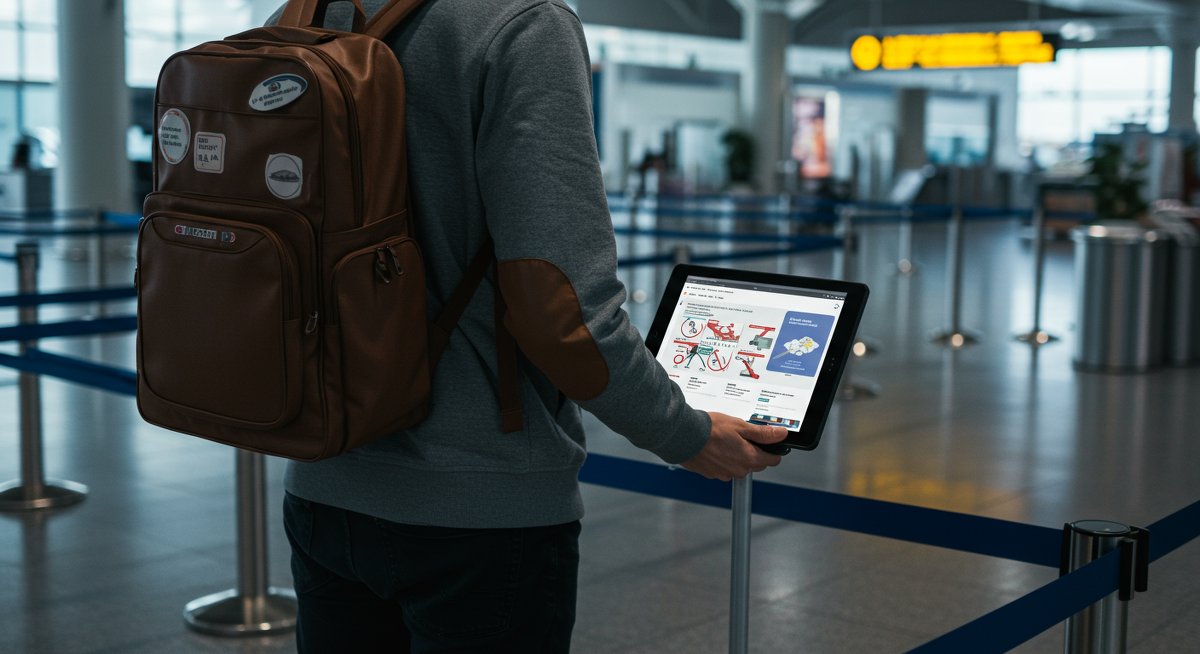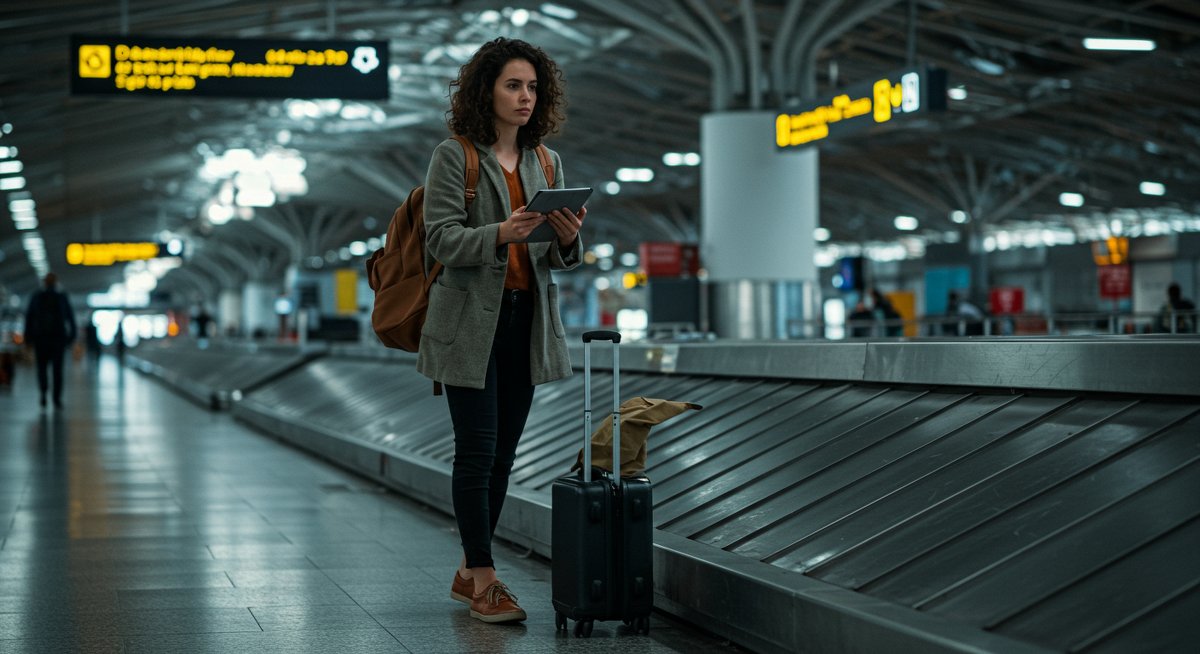Are you planning an international trip and dreading those hefty baggage fees? You're not alone. Navigating the ever-changing world of airline baggage allowances can feel like a maze. This guide provides a complete, step-by-step action plan to help you understand baggage allowance rules, avoid hidden fees, and pack smart for your international adventures in 2025. We'll cover everything from size and weight restrictions to strategies for minimizing costs, ensuring you travel stress-free and within your budget.

Why This Matters for Budget-Conscious International Travelers
Airline baggage fees have become a significant expense, often adding hundreds of dollars to the overall cost of a flight. For budget-conscious travelers, these fees can quickly eat into your travel funds, impacting your ability to enjoy experiences and activities. Understanding baggage allowance is crucial for several reasons:
- Cost Savings: Avoiding fees directly translates to more money in your pocket for hotels, food, and activities.
- Stress Reduction: Knowing the rules beforehand prevents unpleasant surprises at the airport.
- Efficient Packing: Understanding size and weight limits encourages smart packing, which makes your trip easier and more enjoyable.
- Informed Decisions: Knowing your rights and options allows you to make informed decisions when booking flights and packing your bags.
Consider this: A family of four flying internationally can easily spend $200-$400 on checked baggage fees alone. By understanding and utilizing the strategies in this guide, you can significantly reduce or eliminate these costs, potentially saving hundreds of dollars per trip.
Getting Started: What You Need to Know
Before you start packing, familiarize yourself with the basics of baggage allowance. Airlines have specific rules regarding:
- Weight Limits: The maximum weight allowed for checked and carry-on bags.
- Size Restrictions: The maximum dimensions (length + width + height) for your bags.
- Number of Bags: The number of bags you're allowed to bring without incurring fees.
- Fees: The charges for exceeding weight or size limits, or for extra bags.
These rules vary greatly between airlines and even within different classes of service (economy, business, first class). Always check the specific baggage allowance policy of your airline before you fly. Look for this information on their website or in your booking confirmation.
Example: Suppose you're flying from New York to Paris on Air France. Checking their website reveals that economy class passengers are typically allowed one checked bag up to 23 kg (50 lbs) with dimensions not exceeding 158 cm (62 in) total. Carry-on allowance is usually one bag and one personal item with specific size limitations.
Step-by-Step Solution
Here's a simple, step-by-step guide to help you navigate baggage allowance and avoid fees:
- Check Airline Policies: Visit the airline's website or app to find their baggage allowance policy. Note the weight, size, and number of bags allowed for your ticket class.
- Review Your Ticket: Confirm the baggage allowance included with your ticket. Some basic economy tickets have stricter limits.
- Measure and Weigh: Use a luggage scale and measuring tape to determine the weight and dimensions of your bags before you arrive at the airport.
- Pack Smart: Choose lightweight luggage and pack efficiently. Utilize packing cubes and compression bags to maximize space.
- Consider Alternatives: If your bag exceeds the limits, explore options like shipping your luggage or wearing heavier items on the plane.
Your First $100: What to Expect
Let's break down how a traveler might allocate a hypothetical $100 budget for baggage-related expenses, and how to avoid them.
- Luggage Scale ($20-$30): A portable luggage scale is a worthy investment. Weigh your bags before you leave for the airport to avoid surprises. There are digital and analog scales available; digital scales tend to be more precise and easier to read.
- Packing Cubes/Compression Bags ($30-$40): These are essential for organizing and compressing your belongings. Packing cubes help you compartmentalize your clothes, while compression bags remove excess air to save space.
- Carry-On-Only Strategy (Remaining $0-$50): If you successfully pack light, you could allocate this money to activities. You can also put the money towards a slightly better bag (durable and meets airline requirements) instead of checking luggage.
- Shipping (Varies): Consider shipping your luggage if you have heavy items or don't want to deal with checking bags. This could cost anywhere from $50-$200+ depending on the weight, size, and destination.
Common Beginner Mistakes to Avoid
- Ignoring the Fine Print: Not checking the specific baggage allowance for your airline and ticket class.
- Overpacking: Bringing more than you need, leading to overweight or oversized bags.
- Not Weighing Bags: Assuming your bag is within the limit without verifying it.
- Buying Cheap Luggage: Investing in low-quality luggage that may break or exceed size limits.
- Waiting Until the Airport: Attempting to solve baggage issues at the check-in counter.
These mistakes can lead to unexpected fees and added stress, so be prepared and informed before your trip.

International Travel Considerations
When traveling internationally, baggage allowance can be even more complex. Here are some key factors to consider:
- Connecting Flights: If you have connecting flights, each airline may have different baggage rules. Ensure you understand the policies of all airlines involved.
- Regional Variations: Baggage rules can vary based on your destination. Check if there are specific restrictions for the country you are visiting.
- Duty-Free Purchases: Be aware of rules regarding duty-free purchases. Liquids and gels bought at the airport may be subject to restrictions in your carry-on bag.
- Sporting Equipment: If you're traveling with sporting equipment (e.g., skis, golf clubs), check the airline's policy, as special fees often apply.
Example: Consider a trip to Japan from the US with a layover in South Korea. You are flying United from the US to South Korea and Asiana Airlines from South Korea to Japan. Both airlines have their baggage policies. Make sure to look at the restrictions from both airlines, as one might be stricter than the other. It is best to abide by the stricter policy to avoid extra fees.
Building Your Travel Knowledge
Stay informed about airline baggage policies by regularly checking airline websites and travel blogs, as they often post updates. Here are some additional resources:
- Airline Websites: The most reliable source of information.
- Travel Blogs: Many travel blogs offer up-to-date information and tips. Use the search engine to find relevant topics, such as “airline baggage allowance tips”.
- Travel Forums: Participate in online forums where travelers share their experiences and advice.
Next Steps in Your Travel Journey
Now that you're armed with the knowledge to navigate baggage allowance, you're ready to plan your next trip with confidence. Remember:
- Always double-check the airline's baggage policy.
- Pack smart and use lightweight luggage.
- Consider alternatives to checking bags if possible.
- Stay informed about changes in baggage rules.
By following these steps, you can save money, reduce stress, and make the most of your international travel experiences. Safe travels!